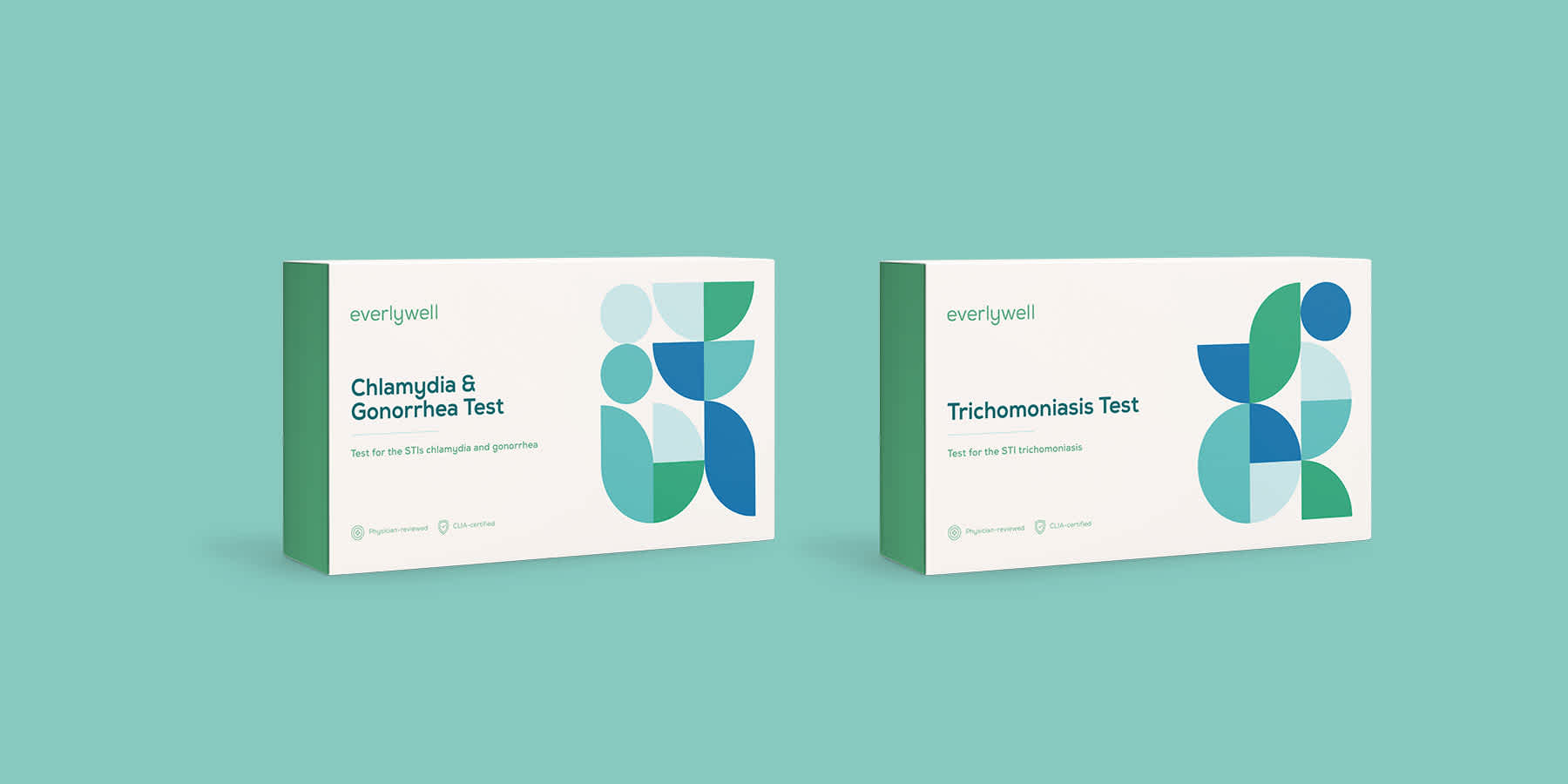
Trichomoniasis vs. Chlamydia: What Are the Differences?
Medically reviewed on February 4, 2022 by Jordan Stachel, MS, RDN, CPT. Last updated October 4, 2023. To give you technically accurate, evidence-based information, content published on the Everlywell blog is reviewed by credentialed professionals with expertise in medical and bioscience fields.
Table of contents
- What Is Trichomoniasis?
- Symptoms of Trichomoniasis
- What Is Chlamydia?
- Symptoms of Chlamydia
- The Difference Between Trichomoniasis and Chlamydia
- Related Content
Sexual activity can come with the risk of sexually transmitted infections. Many sexually transmitted diseases can be hard to distinguish or tell apart, often due to the overlapping symptoms (or lack of symptoms) of several diseases. Trichomoniasis and chlamydia are two of the most common STDs, and they can be particularly difficult to discern. Learn more about the differences between the two below.
The Everlywell at-home Female STD testing and Male STD Testing options can tell you whether you have trichomoniasis, chlamydia, or other common STDs without having to go to a clinic for an in-person STD screening.
What Is Trichomoniasis?
Trichomoniasis, or “trich” for short, is the most common curable STD [7]. It is caused by a one-celled protozoan parasite called trichomonas. This parasite travels via pre-ejaculate, semen, and/or vaginal fluids, and it can spread when any of these infected sexual fluids make contact with the vulva, vagina, or penis. It typically doesn’t infect the mouth, anus, or other body parts [1].
Trich is spread through sexual contact, specifically vaginal sex, though it can also spread through vulva-to-vulva contact or through sharing sex toys. This also means it can’t be transmitted through casual contact, like hugging, kissing, sharing food and drink, or sitting on a toilet seat [1].
Symptoms of Trichomoniasis
While trich can infect all genders, it tends to be more obvious among women. While both men and women can present asymptomatic, women are more likely to show symptoms, while men generally don’t present with any symptoms [2].
Symptoms typically appear within a month following initial transmission. The most prominent symptom of trich is vaginitis, which can manifest as:
- Vaginal discharge that can appear yellow, green, or gray and smell foul
- General irritation and itching in the vagina
- Bloody discharge
- Swelling in the genitals
- Burning while peeing
- Painful intercourse [3]
While symptoms are rare in men (and/or people with penises), those who experience symptoms may have penile discharge, irritation and burning, or pain when they pee and ejaculate [2].
What Is Chlamydia?
Chlamydia is an incredibly common STD that is caused by a bacteria called Chlamydia trachomatis. These bacteria can travel through pre-ejaculate, semen, and/or vaginal fluids. It is mainly spread through anal and vaginal sex, though it can potentially spread through oral sex. Chlamydia can infect the genitals, anus, mouth, and/or throat. Oral chlamydia is less common than genital chlamydia, but it’s not impossible. In rare cases, it can infect the eye if you touch your eye with hands that have infected fluid on them [4].
While chlamydia is more common in young women, it can occur in all genders and age groups [5].
Symptoms of Chlamydia
Like other STIs, chlamydia doesn’t normally cause noticeable symptoms in its early stages. Any symptoms that occur are often mild. Common signs and symptoms include:
- Pain or burning when peeing
- Painful intercourse
- Pus or milky discharge from the penis
- Vaginal discharge that may appear yellow and have a foul odor
- Bloody discharge between periods
- Swelling and tenderness in the testicles
- Discharge, bleeding, and pain in the anus [6]
The Difference Between Trichomoniasis and Chlamydia
There is certainly overlap in the symptoms of trichomoniasis and chlamydia, particularly involving discharge. However, the diseases have distinct differences. Trichomoniasis more commonly presents symptoms in women (and/or people with vaginas), while chlamydia will present symptoms in all genders equally.
Chlamydia can also infect the genitals, anus, mouth, and/or eyes. Trichomoniasis is often more isolated to the genitals.
The good news is that both trich and chlamydia can be easily treated with a round of antibiotics, but identifying the infection ensures the right types of antibiotics are used. If you believe you might have trichomoniasis or chlamydia, consider the trichomoniasis or chlamydia and gonorrhea at-home testing kits with Everlywell. To test for both trichomoniasis and chlamydia with a single kit, you can take Everlywell's at-home STD test, which screens for chlamydia, gonorrhea, hepatitis C (HCV), syphilis, and trichomoniasis.
Related Content
Can You Get Trichomoniasis Without Being Sexually Active?
How to Test for Trichomoniasis
How Long Does It Take for Trichomoniasis to Show?
References
1. Trichomoniasis (Trich). Planned Parenthood. URL. Accessed February 4, 2022.
2. Trichomoniasis - symptoms and causes. Mayo Clinic. URL. Accessed February 4, 2022.
3. What are the symptoms of trichomoniasis? Planned Parenthood. URL. Accessed February 4, 2022.
4. Chlamydia. Planned Parenthood. URL. Accessed February 4, 2022.
5. Chlamydia trachomatis - symptoms and causes. Mayo Clinic. URL. Accessed February 4, 2022.
6. Chlamydia Symptoms. Planned Parenthood. URL. Accessed February 4, 2022.
7. Trichomoniasis – CDC Fact Sheet. Centers for Disease Control and Prevention. URL. Accessed February 4, 2022.
